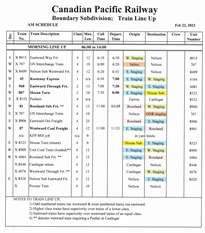-
operations paperwork
-
As with the prototype, we have a certain amount of paperwork that is needed to keep the railroad moving. Over the years we have operated the previous layout, this paperwork was developed and became more sophisticated and closer to the prototype versions.
-
Form 19 - train orders
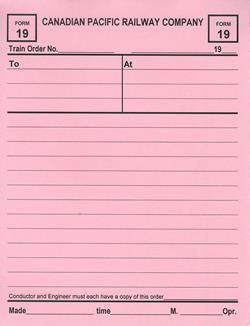 One of our regular crew has designed and printed these prototypically based From 19 Train orders for the local CPR group who use Timetable and Train Orders for their operating sessions.
One of our regular crew has designed and printed these prototypically based From 19 Train orders for the local CPR group who use Timetable and Train Orders for their operating sessions.
-
Clearance form
One of our regular crew has designed and printed these prototypically based Clearance Forms for the local CPR group who use Timetable and Train Orders for their operating sessions.
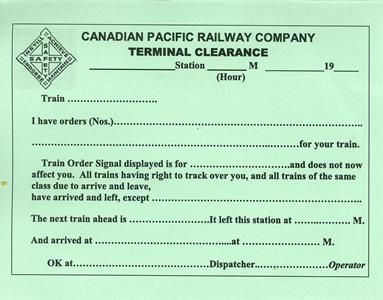
-
train register
These are located at the appropriate locations around the layout as indicated on the timetable. Our form is simpler than the prototype and looks like this;
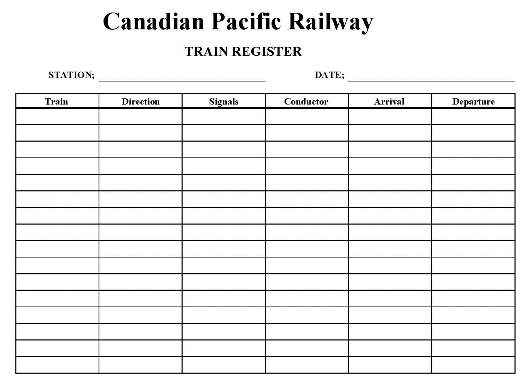
-
car cards & waybills
We presently use the popular 4 sided waybill system first offered by Old Line Graphics, and now available through Micro Mark ( http://www.micromark.com ). This system was used on the previous layout and has proven to be quite reliable and easy to restage the layout for the next op session.
We ultimately didn’t like the Micro Mark ones as much as the old Line Graphics version, so we created our own using MS Excel by basically replicating the general Old Line Graphics configuration. We had them printed by an online print firm on business card stock which required trimming in length to match the other waybills in use. If you are going to consider this idea, I recommend using a matt stock and the thinnest stock.
In addition, to assist crews in understanding the car destinations, the waybills have been enhanced in the routing space with color coded highlight stripes that represent each of the 5 interchange or staging areas that interface with the Boundary Sub. on the layout.
To make the car card use even easier – particularly for operators that are not familiar with the actual prototype, crew member Anthony Craig suggested producing colored labels that overlay the space on the top of the car cards where the specific car data goes. To assist in locating the cars even further, these are color coded to resemble the actual car color and the lettering color & font match those on the car.
He implemented this solution on his own Kettle Valley Railway layout: (http://kettlevalleymodelrailway.blogspot.ca/2015_02_01_archive.html)
Here are examples of them;
.jpg)
.jpg)
They are stored around the layout in a series of car card pockets mounted to the fascia. Here are some photos of the nicely crafted ones as constructed by Ken Catlin, with graphics produced by Daryl Calvert;
.jpg)
.jpg)
.jpg)
-
train instructions
While these are not prototypical, they are essential in helping the crews understand the purpose of each train and what its activities are. All regular trains – both scheduled and extras, have these instructions.
Here are some examples;

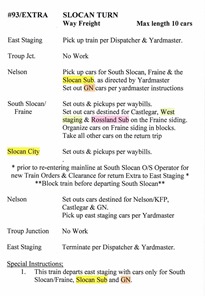
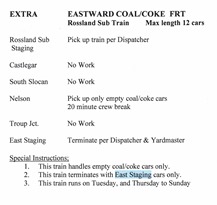
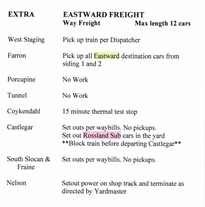
-
Train Line up
We typically run a mix of scheduled and extra trains during each operating session, and as part of the staging process, I generate an updated Train Line Up to summarize all the potential trains that might be run during each of the AM and PM session.
Here is a sample of the Train Line Ups used for the November 2022 and February 2023 Op Sessions:
